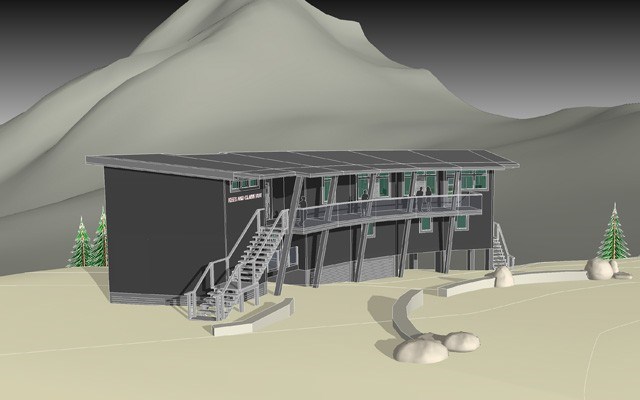The Spearhead Huts Committee (SHC) received a major funding commitment on Monday, June 27 that brings the long anticipated backcountry hut system one step closer to construction.
At a press conference at the Whistler Public Library, committee chair Jayson Faulkner announced the US$700,000 (CDN$915,000) donation that will go towards the design and completion of a backcountry hut located near Russet Lake, the first of three slated for the 40-kilometre Spearhead Traverse.
“We’re really excited because this is such a major step forward,” Faulkner said. “It gets us really, really close to what we need to finish the first hut.”
The donation from the Kees Brenninkmeyer Foundation was made in memory of Cornelius “Kees” Brenninkmeyer, 25, and his girlfriend Claire Dixon, 27, who died in a backcountry skiing accident nine years ago when their snow shelter collapsed. The couple was working as hut custodians on the Wapta Traverse in Alberta at the time. The hut near Russet Lake will be named the Kees and Claire Hut in their honour.
With the substantial donation, along with $150,000 from the municipality’s RMI fund and support from other donours, the SHC has secured over 70 per cent of the money required to start construction on the Kees and Claire Hut. Building is expected to begin in late May 2017, with an anticipated opening date of January 2018.
“This was a fantastic project to make that investment,” Mayor Nancy Wilhelm-Morden said of the RMI funding. “These huts will be an outstanding addition to Whistler’s tourism offerings, activities and the environment we are so well known for. It will be marvelous to welcome people from around the world to come to Whistler and experience the backcountry of Garibaldi Provincial Park through the Spearhead Huts.”
The total project cost — which will cover the design and build of huts on Mt. Pattison and Mt. Macbeth — is estimated at over $5 million. Faulkner said the committee’s focus now would be on raising the remaining funds and securing the necessary volunteers.
“We still have a gap to close, so we don’t want people thinking (fundraising) is all said and done,” he added.
Monday’s announcement is the culmination of more than six years of consultation with BC Parks, which issued the huts’ Project Use Permit in February. The SHC also consulted with the Lil’wat First Nation, which will help facilitate a cultural education program as part of the project.
“We’re looking forward to working with the committee to develop a culture profile with education and awareness of our culture and language that provides our youth and all with knowledge of our traditional territory,” said Lil’wat councillor Rosemary Stager.
The hut system is intended to diversify Whistler’s outdoor experience, offering day and overnight access to the mountains adjacent to the resort in the summer and winter months. The project is predicted to fill 7,000 beds a year and generate $4.4 million in additional GDP for the resort, according to Tourism Whistler’s calculations.
The huts will replace the aging Himmelsbach Hut, named after longtime local Werner Himmelsbach, who designed the original hut at Russet Lake after another local, Karl Ricker, and his fellow UBC Outdoor Varsity Club members first conquered the horseshoe-shaped route in 1965.
“We dreamed of a hut system being built in these ranges over 50 years ago and it is very exciting to see this project finally take flight after so long,” Himmelsbach said.
For more information, visit www.spearheadhuts.org.




